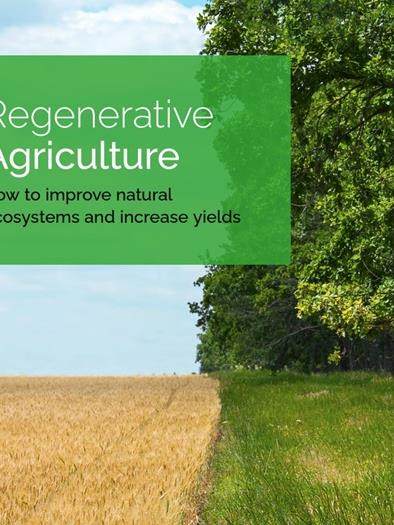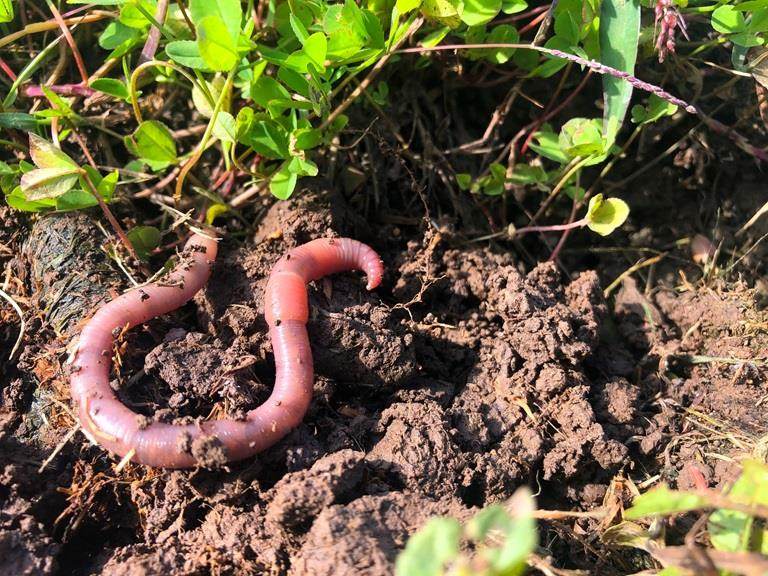Innovations helping deliver Regenerative Agriculture
Regenerative Agriculture (RegenAg) is often described through farming practices: minimising tillage, keeping soils covered, growing diverse crops, and reintroducing livestock (see our previous blog for a primer on RegenAg).
But while these farming shifts are vital to regenerating ecosystems, they can be boosted by a wide range of emerging AgTech innovations. We explore these innovations in detail in our new whitepaper ‘Regenerative Agriculture: How to improve natural ecosystems and increase yields’, and in this blog we aim to provide a quick introduction to the key RegenAg innovations.

What RegenAg innovation aims to achieve
The underpinning principle of RegenAg is healthy soil – an ecosystem rich with microorganisms, organic matter, enzymes, and nutrients supports plant growth and resilience, water retention and carbon sequestration. Some farming practices – such as tillage, monocropping, and heavy agrochemical use – break down soil structure, harm beneficial organisms, and deplete organic matter.RegenAg therefore means stopping the harm and restoring the balance to soil. Innovation can support these goals in three ways.
1. Rethinking harmful chemical inputs
Synthetic pesticides and fertilisers have long been critical to modern farming. But their overuse has contributed to soil degradation and water pollution. These are probably not about to disappear from global farming, but the less we use, the more chance we give the soil to recover.Innovation is making these treatment more precise and less harmful. For example, new seed treatments are allowing pesticides or nutrients to be delivered exactly where they have an impact, replacing broad spraying. Smart formulations can ensure active ingredient only stick where they are needed. Greener formulations reduce residual harm.
2. Harnessing biological solutions to improve soil health
Biological products offer the most exciting opportunity for RegenAg. Biocontrols use beneficial organisms – bacteria, fungi, viruses, or insects – to suppress pests and diseases naturally. Biofertilisers add living microbes to the soil.These tools are not silver bullets – they must be deployed in soils where regenerative practices have already improved conditions. But used correctly, they can help restore balance to degraded ecosystems and reduce reliance on synthetic inputs.
3. Making crops more resilient
Healthy soils are the foundation of RegenAg, but perfect soil ecosystems are not always achievable. So innovations that improve crop yield and resilience – without piling on ever more chemicals – can play a key role in RegenAg.Biostimulants are one route, and are increasingly used to enhance plant resilience, stimulating root growth, improving water-use efficiency, or activating antioxidants that protect against stress.
Another is seed breeding. For decades, breeding has emphasised yield or flavour at the expense of resilience. Now, seed companies are prioritising traits that make plants naturally more resistant to pests, diseases, and environmental stress – reducing the need for chemical protection.
Enabling scale
No single innovation will deliver regenerative agriculture. But together – more precise chemicals, powerful biologicals, resilient seeds, and digital farming tools – create a toolbox that can enable RegenAg to thrive at scale, when delivered alongside improved farming practices.
As Kevin Ashford of UPL Corp puts it in our whitepaper: “If we just remove the harmful practices, healthy soil will gradually regenerate. But farming needs fast improvements. That’s why we need to proactively deploy regenerative tools and techniques to give soil a chance of rapid recovery.”
To learn more about the innovations that could enable RegenAg, download our whitepaper:
Regenerative Agriculture: How to improve natural ecosystems and increase yields’
Regenerative Agriculture: How to improve natural ecosystems and increase yields

